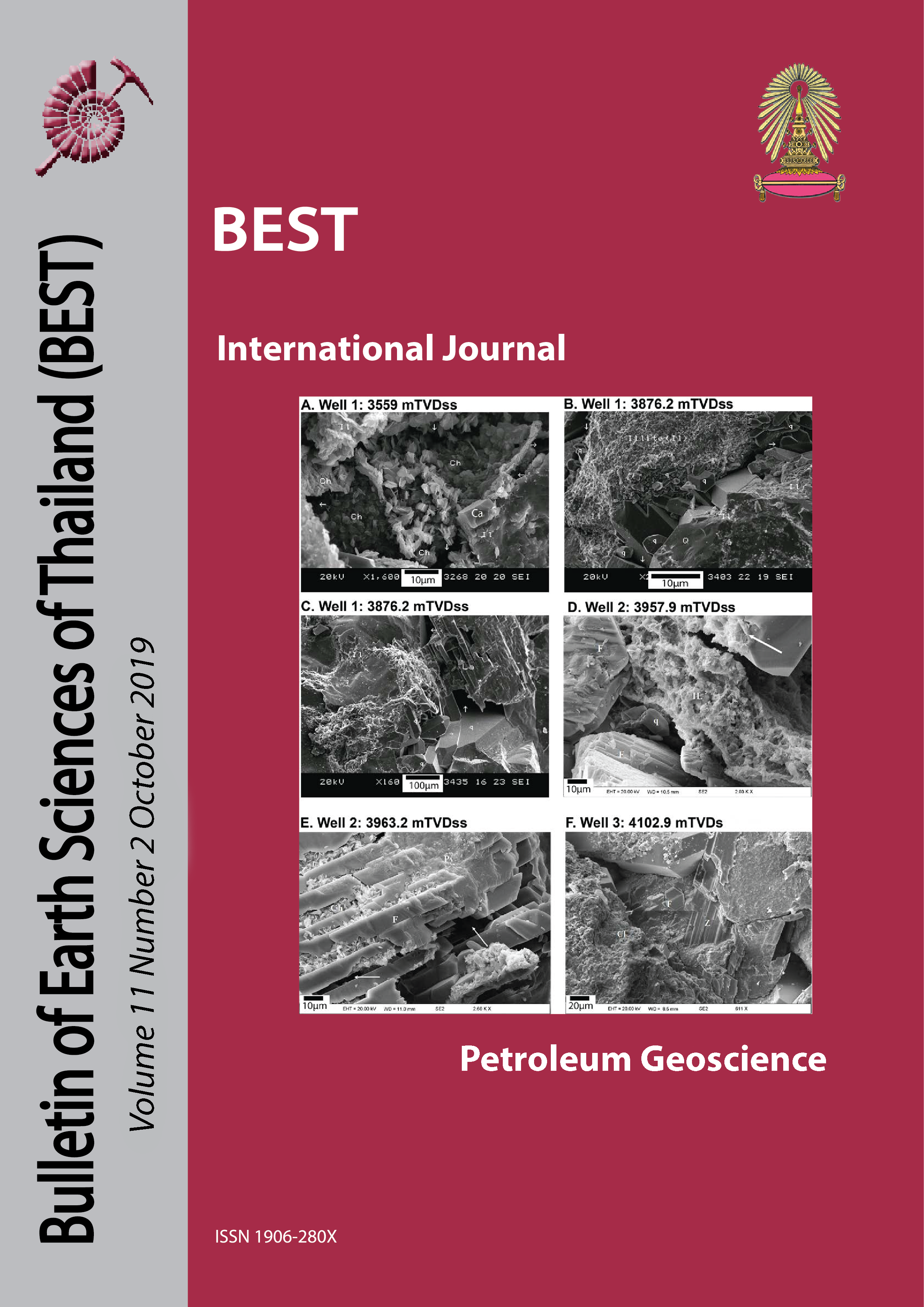The Use of Seismic Attributes for Submarine Channel Interpretation in Deepwater Taranaki Basin, New Zealand
Main Article Content
Abstract
The Deepwater Taranaki Basin is considered as undeveloped and unexplored deepwater part of Taranaki Basin. The purpose of this study is to determine the submarine channel complex within Romney-3D seismic data by using seismic attribute and seismic facies analysis. Variance attribute is suitable for outlining the edge of channel complex. Instantaneous frequency attribute is good for observing the detail of architectural elements. Root mean square (RMS) amplitude and sweetness attributes indicate the lithological variation especially sweetness attribute which distinguishes between sandy and muddy lithology. The architectural elements of this study area can be detected by using seismic attributes. Seismic facies analysis is used to confirm the interpretation of these elements. Seismic facies can be categorized into five main facies including overbank deposits, mass transportation complex, inner levee deposits, stacking channel deposits, and point-bar deposits. In this study, seismic facies and seismic attribute are successfully used to define sand distribution mostly associated with basal lag and stacking channel of channel-fill deposits. These deposits may have good porosity and permeability providing a flow unit in submarine channel deposits.
Article Details

This work is licensed under a Creative Commons Attribution-NonCommercial-NoDerivatives 4.0 International License.
Copyright © 2008 Department of Geology, Faculty of Science, Chulalongkorn University. Parts of an article can be photocopied or reproduced without prior written permission from the author(s), but due acknowledgments should be stated or cited accordingly.
References
Grahame, J., 2015. Deepwater Taranaki Basin, New Zealand—New Interpretation and Modelling Results for Large Scale Neogene Channel and Fan Systems: Implications for Hydrocarbon Prospectivity, in: International Conference and Exhibition, Melbourne, Australia 13-16 September 2015. Presented at the International Conference and Exhibition, Melbourne, Australia 13-16 September 2015, Society of Exploration Geophysicists and American Association of Petroleum Geologists, Melbourne, Australia, pp. 518–518.
Higgs, K.E., Arnot, M.J., Browne, G.H., Kennedy, E.M., 2010. Reservoir potential of Late Cretaceous terrestrial to shallow marine sandstones, Taranaki Basin, New Zealand. Marine and Petroleum Geology. 27: 1849– 1871.
Li, Q., Yu, S., Wu, W., Tong, L., Kang, H., 2017. Detection of a deep-water channel in 3D seismic data using the sweetness attribute and seismic geomorphology: a case study from the Taranaki Basin, New Zealand. New Zealand Journal of Geology and Geophysics 60, 199–208.
Sutherland, R., 2001. Tectonic Evolution of Cretaceous Rift Basins in South-Eastern Australia and New Zealand: Implications for Exploration Risk Assessment 11.
Uruski, C.I., Stagpoole, V., Isaac, M.J., King, P.R., Maslen, G., 2002. Seismic Interpretation Report – Astrolabe Survey, Taranaki Basin, New Zealand. Institute of Geological & Nuclear Sciences confidential client report 2002/70 (unpublished). 70 Crown Minerals open-file Petroleum report 3072, Ministry of Commerce, Wellington.
Uruski, C.I., 2008. Deepwater Taranaki, New Zealand: structural development and petroleum potential. Exploration Geophysics 39, 94-107.


